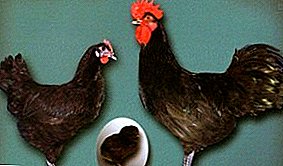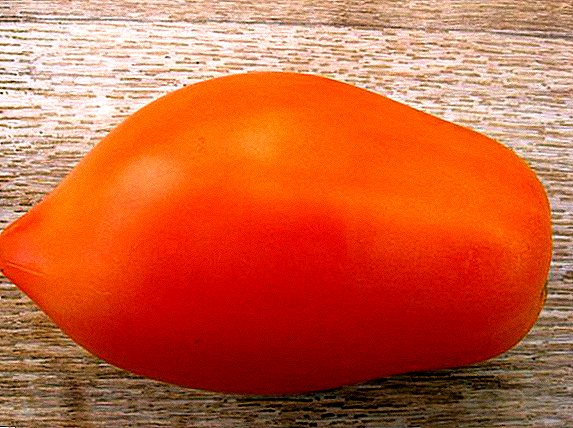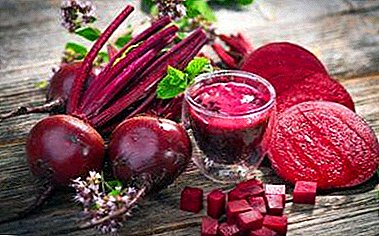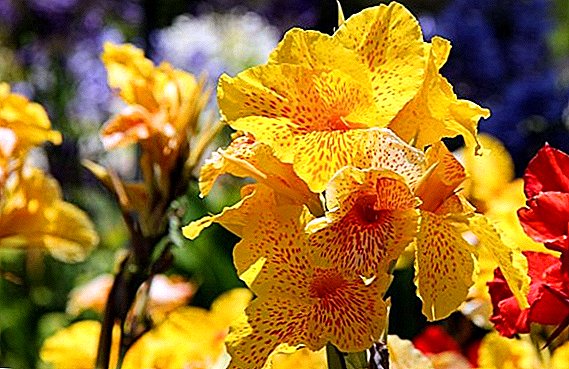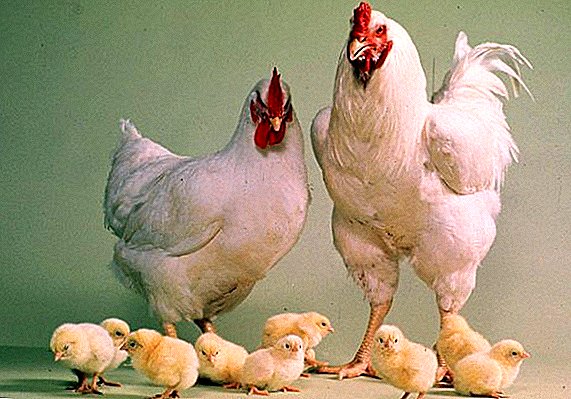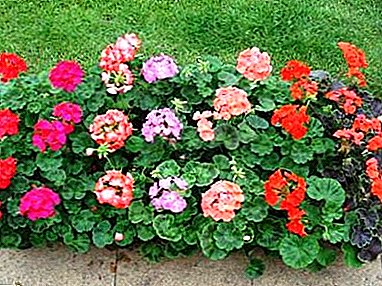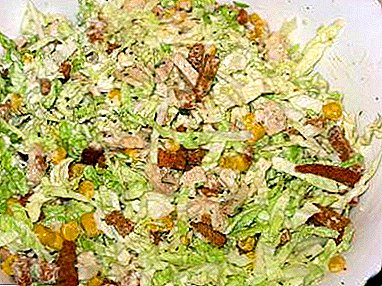 Many representatives of the rather numerous Fazanov family are distinguished by their spectacular appearance. No exception is the genus Tragopanov, which includes five species. These beautiful birds lead a secretive lifestyle and are little known here. This material will help to learn about the habits of tragopans in the wild, as well as the peculiarities of their content in captivity.
Many representatives of the rather numerous Fazanov family are distinguished by their spectacular appearance. No exception is the genus Tragopanov, which includes five species. These beautiful birds lead a secretive lifestyle and are little known here. This material will help to learn about the habits of tragopans in the wild, as well as the peculiarities of their content in captivity.
Description and appearance
All five species of the Tragopan genus have common features, namely:
- males and females outwardly clearly differ (sexual dimorphism);
- males are larger (weight on average 1.5-2 kg), brightly colored, they are dominated by red, brown and black colors, there are additional attributes (tufts, spurs, etc.) that are not present in females;
- females are smaller (average 1-1.5 kg), the color is modest, mostly shades of brown;
- the body of these birds is dense, stocky;
- on the head of the males are fleshy, horns-like growths, the beak is short, the eyes are brown, the head of adult males is decorated with a tuft;
- the neck of the bird of both sexes is short, on the throat of the males are brightly colored skin folds in the form of lapels;
- legs are short; spurs are decorated with males;
- wings rounded;
- the tail is short or medium in size, wedge-shaped at the side.

Types of tragopan
As mentioned above, the species of the Tragopanov includes five species. We briefly describe the characteristic features of each of them.
- Blackhead or western tragopan (Tragopan melanocephalus) - The male is distinguished by a black cap on his head, equipped with a tuft with a red tip. There are no feathers on the cheeks and in the area around the eyes; these areas of skin are colored bright red. Part of the neck and part of the chest are red, but the throat is dark blue. The scaly horns on the head are blue. The rest of the body is predominantly black with white and red spots. The color of the females consists of brown, gray and red tones with white blotches. The average weight of a male is 1.8-2 kg, females - 1.3-1.4 kg.
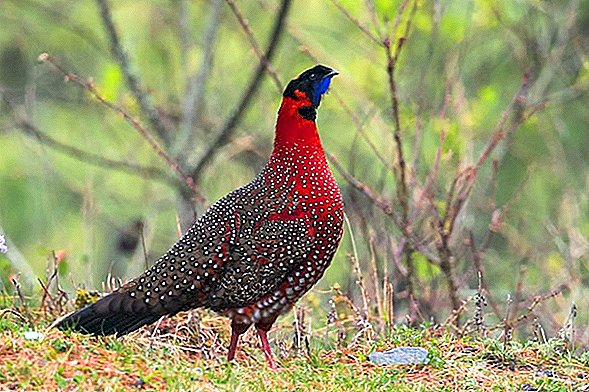
- Burobryuhi or tragopan Cabot (Tragopan caboti) - males have a black cap on their heads with a black and orange tuft. The part of the head around the eyes and beak is devoid of feathers and is colored bright orange. The chest and abdomen are creamy white, the rest of the body is brown, covered with white specks with a black border. The color of the females is mostly brown-red with whitish specks. The average weight of a male is 1.2-1.4 kg, females weigh 0.8-0.9 kg.
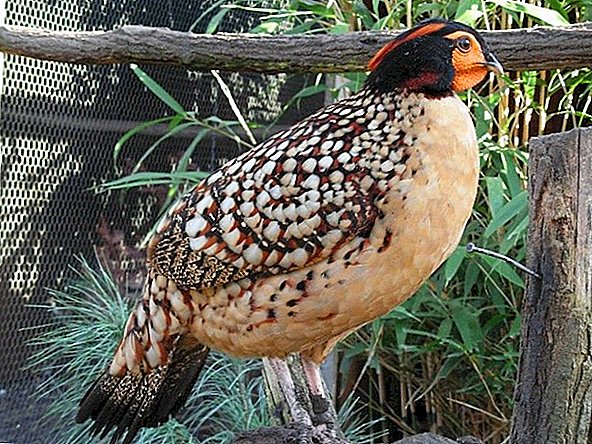
- Mottled or Tragopan Temminka (Tragopan temminckii) - many consider this species to be the most beautiful of the whole Fazanov family. On the head of males there is a black-orange tuft and blue growths-horns. From the throat hang spectacular outgrowths similar to the lapels, blue and turquoise with red spots. There are no feathers on the face, the skin is blue. Other body is covered with dark red or red feathers with white specks in a black frame. The females have a modest brown-gray plumage. The male weighs on average 1.3-1.4 kg, the weight of the female is 0.9-1.0 kg.

- Serobryuhy or Tragopan Blyth (Tragopan blythii) is the largest representative of this genus. The males have a bright red tuft with a black stripe on the head, the front part of the head is yellow and has no feathers. The neck and chest are red, the belly is smoky gray, the other parts of the body are red-brown, covered with white spots. The color of females is dominated by brown with brown, black and white specks, their belly is gray. Males weigh 2.1 kg on average, females weigh up to 1.5 kg.

- Tragopan satyra, he's indian. The head is adorned with a black tuft with dark red spots, as well as blue growths of horns. The area around the eyes and lapel growths on the larynx are featherless and colored blue. The chest, part of the neck and back are red, covered with white specks in a black border. The back is brown with the same white spots. The female has brown-reddish plumage with black and light spots. The weight of males is 1.6-2 kg, females weigh 1-1.2 kg.
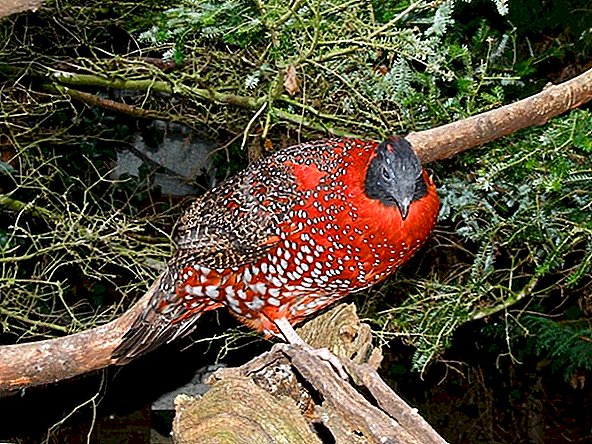
Where dwells
These birds prefer deciduous, coniferous or mixed mountain forests, growing at a height of from one thousand to four thousand meters above sea level. Different species inhabit the following areas of Asia:
- the black-headed dwells in the Western Himalayas, on the territory of India and Pakistan;
- boarbush is found in southeastern China;
- ocellules are common in Bhutan, in northeastern India, in Tibet, in central China, and also in northern Vietnam;
- sulfurous lives live in eastern Bhutan, northeastern India, southeastern Tibet;
- Satyr lives in Nepal, northeastern India, Tibet, Bhutan, and southern China.
Important! Of all the types of tragopans, the state of satyr, ophthalmic, and bur-bellied populations does not cause concern. The number of serobryukhs and blackheads is small and tends to decrease. The situation is aggravated by the fact that these species are particularly dependent on habitat conditions and do not breed well in captivity.
Lifestyle and behavior
These birds lead a secretive lifestyle and are shy, which makes them difficult to observe in the wild. They live in mountain forests with thick undergrowth, hide in thickets or in treetops, usually live alone, in the mating season they form pairs, small flocks can be observed during the maturing period of the chicks.  All species are sensitive to elevated air temperature. Usually they wait out the heat on the ground in thick shadow.
All species are sensitive to elevated air temperature. Usually they wait out the heat on the ground in thick shadow.
This bird is not prone to migrations, it mainly keeps on one territory, but can migrate for short distances, literally several kilometers. Migrations to farther distances are possible only with abrupt climatic changes. Adult individuals guard the chicks until they become completely independent.
Today, among poultry, exotic ones are becoming increasingly popular: quails, pheasants, ostriches and guinea fowls.
What feeds on
All five species feed twice a day: in the early morning and in the late evening, already at dusk. In some cases, they can be fed during the day, but only on cloudy days. They are looking for food both on land and in trees and shrubs. Consume mainly plant foods: berries, fruits, acorns, shoots of plants, their leaves, seeds, buds. On occasion, they eat insects, worms, snails, etc.
Breeding
It is assumed that all tragopans are monogamous, although the monogamy of some species is still questionable. Males begin to talk in March, conscripts are heard every 10-15 minutes, sometimes for many hours daily.  In addition to tokanie, they, to attract females, perform mating dances: squat, shake their heads, open their wings, lower them to the ground, fluff feathers, inflate folds on the neck and growths on the head. Having settled in a certain territory, the males during this period aggressively kick out competitors from it, and the fights often end with injuries and sometimes with the death of one of the males.
In addition to tokanie, they, to attract females, perform mating dances: squat, shake their heads, open their wings, lower them to the ground, fluff feathers, inflate folds on the neck and growths on the head. Having settled in a certain territory, the males during this period aggressively kick out competitors from it, and the fights often end with injuries and sometimes with the death of one of the males.
Did you know? The name “tragopan” is assumed to be derived from the Greek words Trago, which means “goat” and Pan is the name of the shepherd ancient Greek god. And because of growths on the head, similar to the horns, they are often called "horned pheasants."
The marriage period may continue until June. These birds make their nests on branches, in hollows or forks of trees. For the manufacture of nests used grass, twigs, leaves, feathers, moss. Tragopan can occupy the abandoned nests of other birds, most often predators or corvids.  On average, females lay between two and six eggs. Their incubation lasts about a month, the females sit in the nest, the males feed them. It has been observed that when eggs are hatching by captive females, they are sometimes replaced in the clutch by males. It is possible that this happens in the wild.
On average, females lay between two and six eggs. Their incubation lasts about a month, the females sit in the nest, the males feed them. It has been observed that when eggs are hatching by captive females, they are sometimes replaced in the clutch by males. It is possible that this happens in the wild.
Chicks are born quite developed, in a few days after their appearance, they can flip from place to place. The female herself takes care of the hatched chicks until they become able to feed and fly independently.
Important! It is recommended to buy poultry only from breeders, they specifically pick up pairs. If a couple is random, which is usually the case with second-hand dealers, then the male very often just beats the female to death. If during the period of toking, the male is aggressive towards the female, then he is usually pruned with one wing, then he becomes unable to catch up with the female.
Is it possible to keep in captivity
Without any problems in captivity, satires, oculated, and bur-bellied tragopans breed. Other species breed in such conditions badly. Breeders say that in captivity birds get used to people, do not run away from them, can take food from their hands and sit on people’s shoulders. Keep them in enclosures, and year-round.  This bird tolerates the winter cold, it is much more unpleasant for it to be direct sunlight, so shelter from the sun should be provided for without fail.
This bird tolerates the winter cold, it is much more unpleasant for it to be direct sunlight, so shelter from the sun should be provided for without fail.
Constructing a poultry yard, learn how to make a chicken coop, a goose, a duckling, a pigeon house, a poult, a poultry house, as well as a house for indoutok and mandarin ducks with your own hands.
It is believed that the minimum size of an enclosure for tragopan is approximately 40 square meters. m However, there are examples of the successful maintenance of these Fazanovs in much more modest enclosures with an area of 5-10 square meters. m. In any case, before you start such birds, it is recommended to consult on the conditions of their maintenance at the breeders.
Nests for these birds are arranged at a height of 1-1.5 meters above the ground. Drawers or baskets are used as nests.  The basis of the diet is greens, berries (blackberries, elder, mountain ash), vegetables (tomatoes, carrots, cabbage), fruits are especially loved. Grain mixtures are recommended to be given with caution, as the bird may over-fatten and die. Chickens are given grated boiled eggs, finely chopped lettuce, low-fat and non-sour cottage cheese. It is useful to enter into their diet and meal worms.
The basis of the diet is greens, berries (blackberries, elder, mountain ash), vegetables (tomatoes, carrots, cabbage), fruits are especially loved. Grain mixtures are recommended to be given with caution, as the bird may over-fatten and die. Chickens are given grated boiled eggs, finely chopped lettuce, low-fat and non-sour cottage cheese. It is useful to enter into their diet and meal worms.
So, the tragopans, who are among the most beautiful representatives of the Fazanovs, are very difficult to observe in natural conditions, the more they dwell in the inaccessible mountainous terrain. Because of this, their lifestyle to date has not been fully explored.
In addition to the tragopan, such bird as the pheasant also belongs to the representatives of the Fazanovs. We advise you to get acquainted with the best breeds of pheasants, as well as consider the characteristics of golden, eared and white pheasant.
Fortunately, some species of tragopan people have learned to breed in captivity, so that the poultry farmers can try to get these charming birds.








